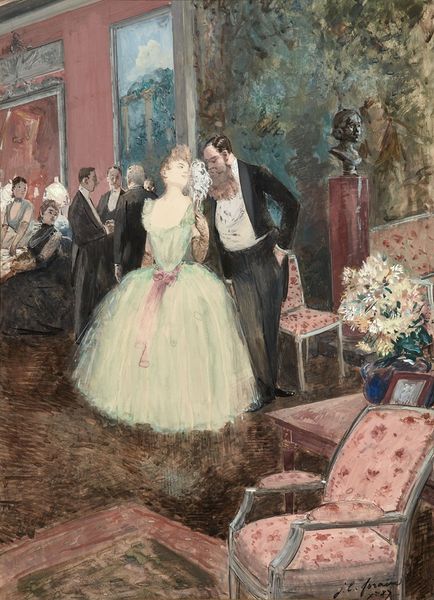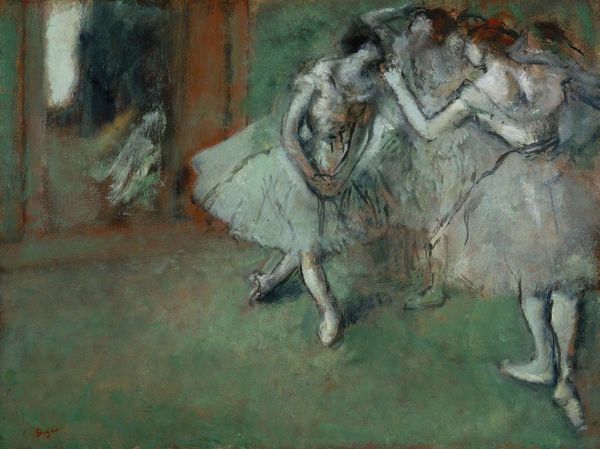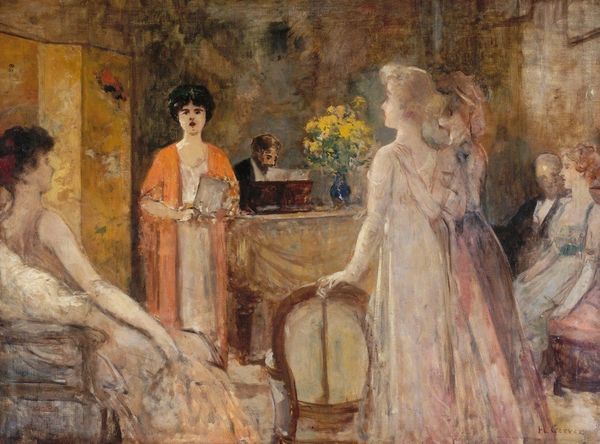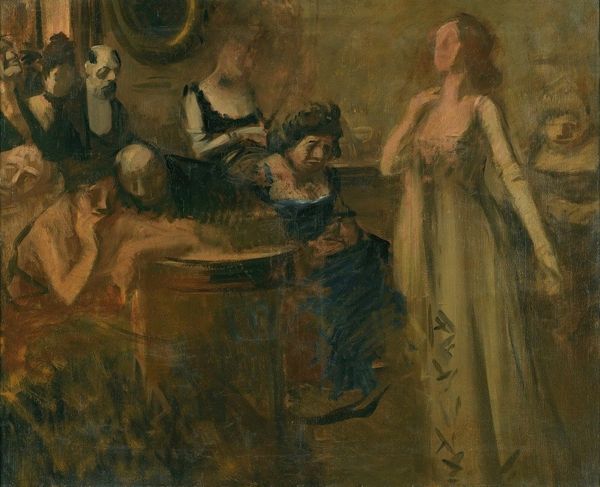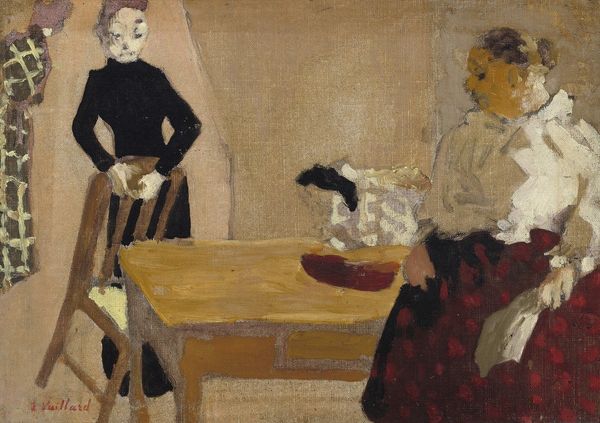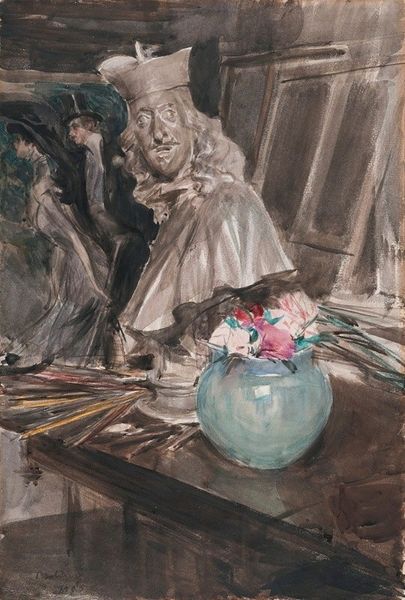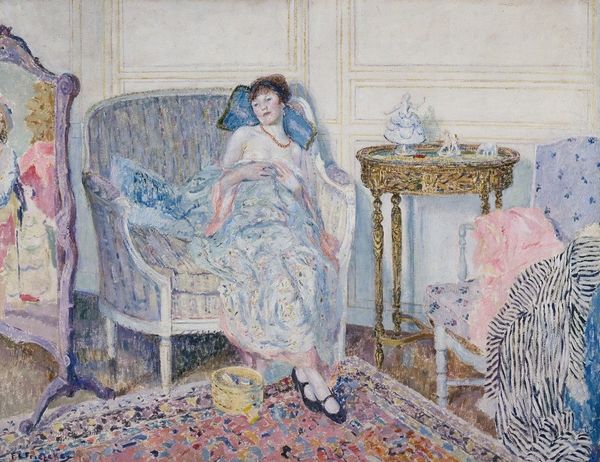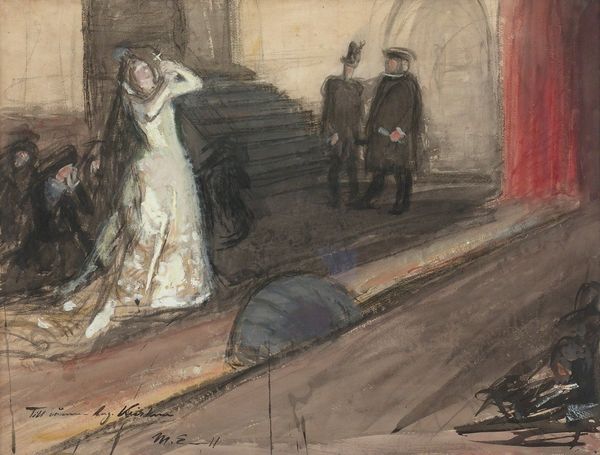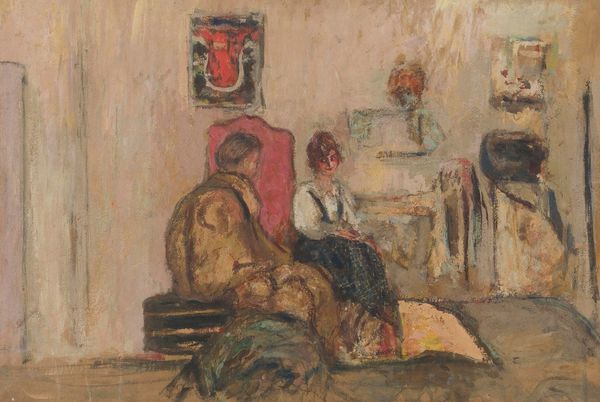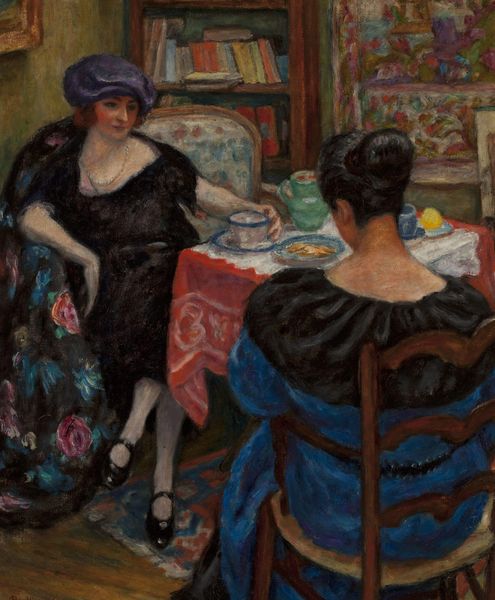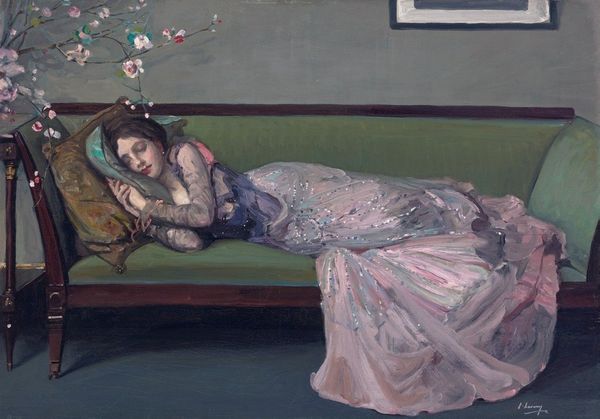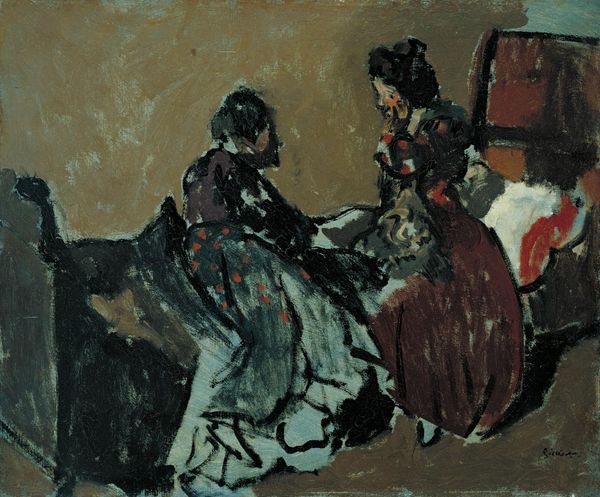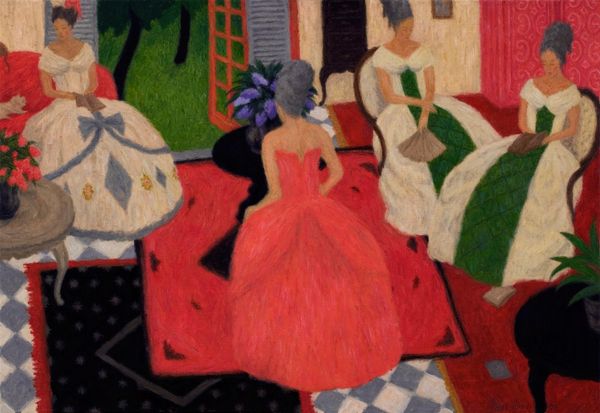
Copyright: Public Domain: Artvee
Editor: This is "Weiße Puppe," or "White Doll," painted by Leo Putz in 1908. It’s an oil painting, and it has this… slightly unsettling, intimate vibe. Almost voyeuristic. What do you see in this piece, from a historical context? Curator: What I find compelling is the staging of domesticity. Note how Putz presents the doll – a representation of idealized femininity – juxtaposed against what seems like a chaotic backdrop of fabric and what *could* be a representation of the artist himself looking on. Does the positioning and almost caricature-like portrayal of this on-looker perhaps represent the role and gaze of the (predominantly male) art consumers? What purpose did it serve at the time this was created, what’s your read on that? Editor: That’s fascinating. I hadn’t considered the viewer’s role like that. So, it’s less about a straightforward depiction of a domestic scene and more about…commenting on the act of viewing and the societal expectations placed upon women? Curator: Precisely. And consider the period – early 20th century, a time of burgeoning feminism. Are we perhaps seeing a subtle critique of the commodification and objectification of women through art? Does the "intimate vibe," that you pointed out perhaps enhance this commentary? Editor: So, the painting isn't just about what’s *in* the scene, but about how that scene interacts with the broader socio-political landscape. It is intended to make the viewer a conscious part of a social narrative. Curator: Exactly. Museums display this now – does that amplify, mute or alter Putz’s intended purpose, do you think? It certainly changes how contemporary audiences view it! Editor: That's definitely food for thought. I came in thinking this was just a portrait with an odd feel. Now I’m considering its role in a wider social dialogue, its historical purpose and evolution. Curator: Precisely. Analyzing the purpose is critical. Always look beyond the surface, consider art as a reflection of, and participant in, the historical moment.
Comments
No comments
Be the first to comment and join the conversation on the ultimate creative platform.
